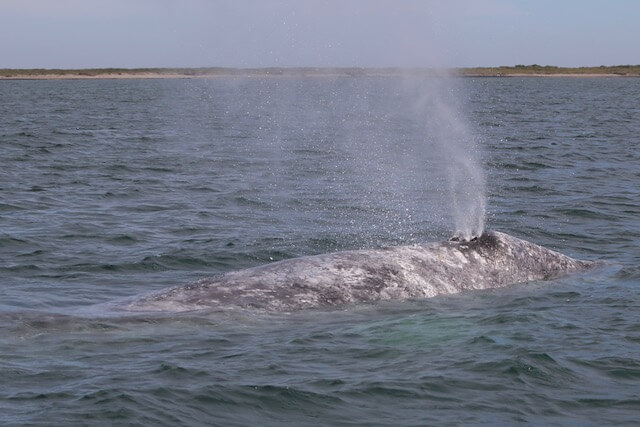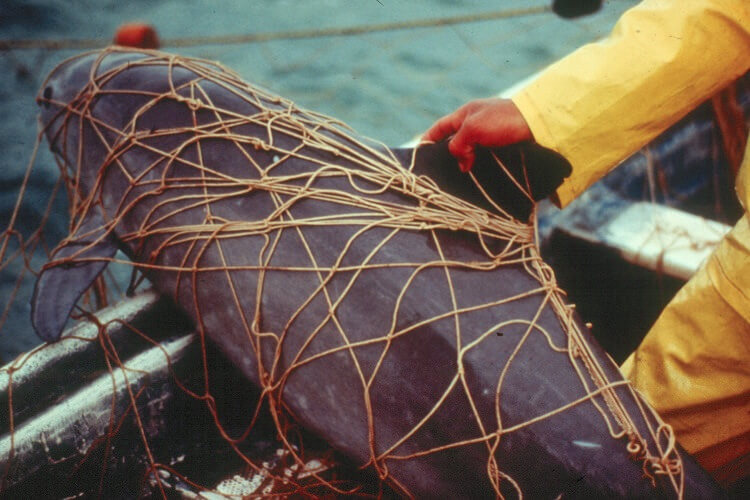At the present time, there are very few extinct whales, although some – described later in this article – have not been observed for several years or are very limited in number.
D’anciennes disparitions
Toutes les espèces appartenant au groupe des archéocètes, des baleines «primitives», sont éteintes depuis environ 30 millions d’années. Un grand nombre d’espèces d’odontocètes et de mysticètes, des baleines «modernes», sont aussi disparues, comme le démontrent les archives fossiles. Notons par exemple Bohaskaia monodontoides, un proche cousin des bélugas actuels qui vivait sur la côte est des États-Unis, éteint il y a 3 millions d’années.
De récentes disparitions
There is evidence to suggest the presence of gray whales in the Atlantic during the 17th century. Partially fossilized skeletons dating back to1675 have been found in eastern North America and descriptions contained in reports from different regions support the hypothesis of its existence. This species, which frequented the coasts of Iceland, Europe and North America, was probably hunted to extinction.
The Chinese river dolphin or baiji, a freshwater dolphin endemic to the Yangtze River, may also be extinct since 2006. In 1997, its population was estimated at 13 individuals. Since then, it has not been observed, despite intensive searches. A number of factors such as mortality due to illegal fishing practices (electrofishing), ship strikes, underwater blasting, habitat degradation, dam construction, declining prey populations and pollution are believed to have contributed to its extinction.
Upcoming tragedies...
Three cetacean species are considered “Critically Endangered” by the International Union for Conservation of Nature (IUCN).
The Gulf of California porpoise, also called the vaquita, is confined to the northern reaches of the Gulf of California.
It is considered to be the marine cetacean that is most at risk of becoming extinct. After registering annual declines averaging 8% a year since 1997, its population in 2008 was estimated at just 245 individuals. Entanglement in gillnets appears to be the major cause of mortality for this species.
The two right whale species of the northern hemisphere are also considered to be amongst the most at risk of becoming extinct. The North Atlantic right whale population was estimated at 300-350 individuals in 2008. Although an increase has been observed in recent years (now estimated at 500 individuals), this may not be enough to support the annual declines which it had previously suffered. Once the most hunted whale, it is now threatened by ship strikes, marine traffic and entanglement in fishing gear. The North Pacific population, which had also formerly been the target of intensive hunting, is estimated at between 300 and 400 individuals. In the 20th century, only 6 observations were recorded. Last year, a right whale was observed on 5 consecutive days, after 60 years without a sighting.
Certain species are found in different parts of the world, but some of their distinct populations are endangered. This is the notably the case of the St. Lawrence beluga. Although belugas are found in several circumpolar regions, it is the populations of the St. Lawrence Estuary, Cumberland Sound, Eastern Hudson Bay and Ungava Bay that are endangered.
En savoir plus
- Dauphin Baiji : une espèce disparue... revue 12 ans plus tard? (Baleines en direct, 11/06/2018)







